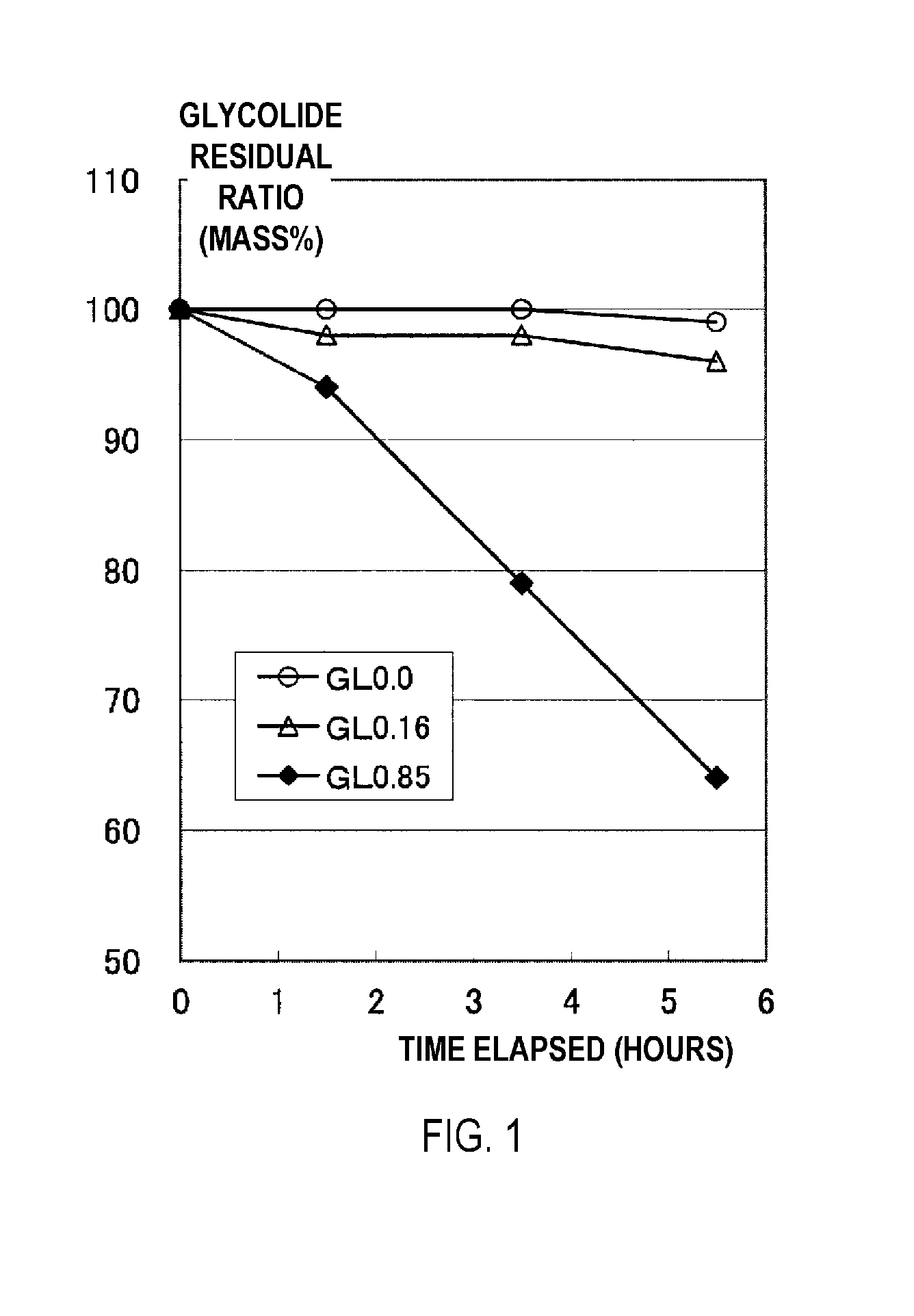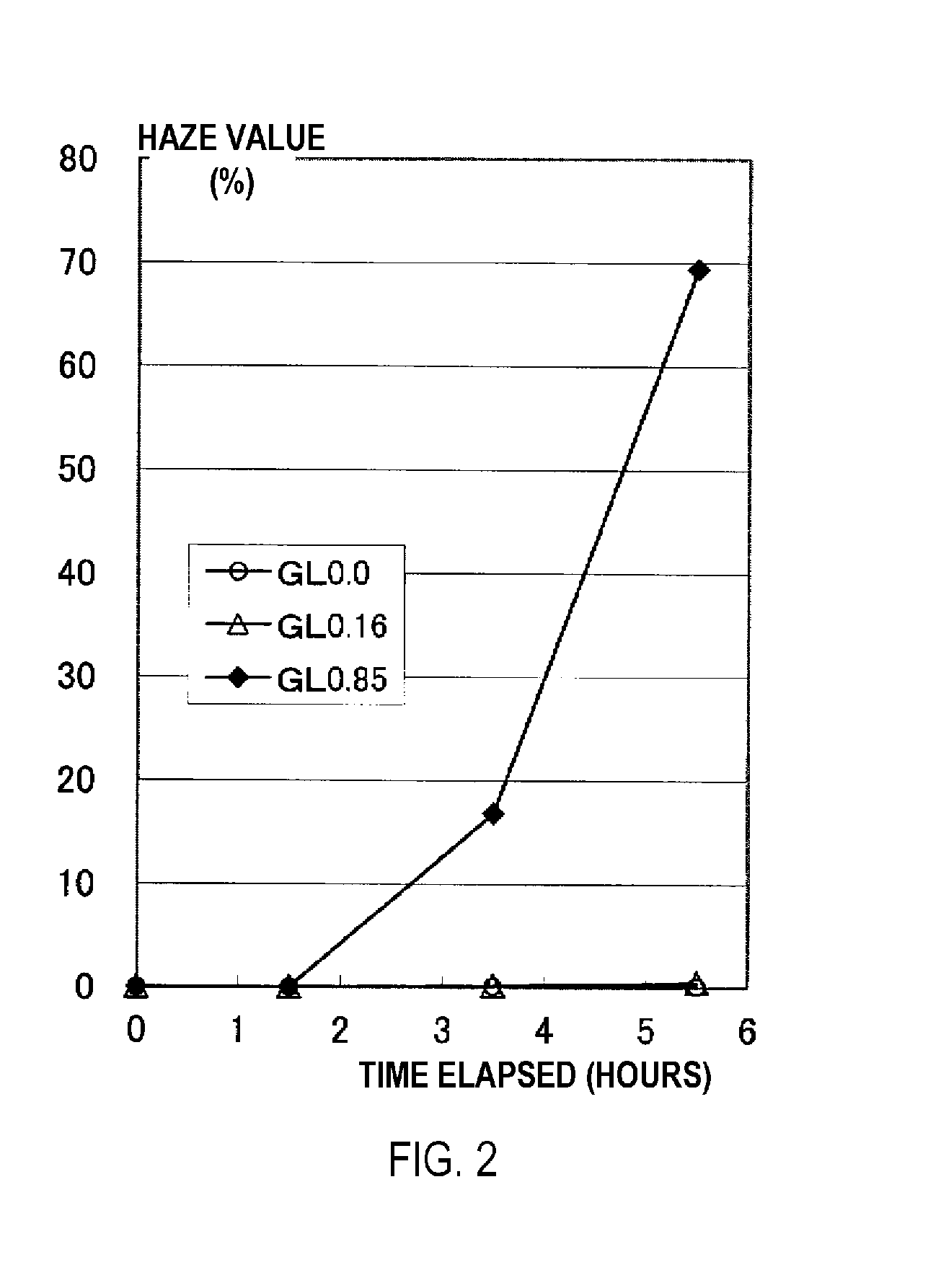Method for producing glycolide, which is provided with rectification step by means of gas-liquid countercurrent contact, and method for purifying crude glycolide
a technology of glycolide and rectification step, which is applied in the direction of organic chemistry, chemical apparatus and processes, separation processes, etc., can solve the problems of difficult to obtain high molecular weight pga for use in molding materials or the like, difficult to synthesize glycolide efficiently and economically, and difficult to obtain high molecular weight pga, etc., to achieve better efficiency, long-run performance, and reduce the concentration of free acids in the glycolide distilla
- Summary
- Abstract
- Description
- Claims
- Application Information
AI Technical Summary
Benefits of technology
Problems solved by technology
Method used
Image
Examples
reference example 1
Preparation of GAO
[0163]First, 2,500 g of glycolic acid [Glypure (registered trademark) made by Du Pont, Inc.] was charged into an autoclave with a volume of 5.1, and after this was heated from 170° C. to 200° C. over the course of two hours while stirring at normal pressure, a condensation reaction was performed while the water that was produced was distilled out. Next, the pressure inside the canister was reduced to 5.0 kPa, and low-boiling-point components such as the unreacted raw material were distilled out by heating for two hours at a temperature of 200° C. so as to prepare a GAO. The resulting GAO had a weight average molecular weight of 19,000 and a melting point of 218° C.
working example 1
[0164]A GAO composition containing 150 g of the GAO prepared in Reference Example 1 and 150 g of a hexaethylene glycol dimethyl ether (the group (a) solvent having a boiling point of 356° C. at normal temperature) was charged into the reactor of the depolymerization reaction device and heated to a temperature of 220° C. under reduced pressure conditions of 3.0 kPa in a nitrogen gas atmosphere (heating step). It was visually confirmed that the GAO was uniformly dissolved in the solvent, that no GAO melt phase was present, and that no phase separation had occurred. When the temperature was changed to 237° C. and heating was continued while maintaining the same reduced pressure conditions, the GAO composition boiled and a depolymerization reaction started (glycolide production step), which in turn triggered the distillation of the mixture containing glycolide (distillation step). One hour after distillation began, the cock of the distillation line at the top of the rectifier attached t...
working example 2
[0165]A depolymerization reaction of a GAO was performed in the same manner as in Working Example 1 with the exception that a Snyder 12-level tray column (inside diameter: 20 mm) was used as a rectifier instead of the packed column described above, and the starting conditions of the depolymerization reaction were adjusted to a temperature of 239° C. and a pressure of 3.5 kPa. When distillation was continued for 300 minutes (5 hours), the rectification operation was realized without incident. The captured material accumulated in the receptacle was recovered, and the product was determined to be concentrated glycolide when analyzed by GC. The purity of the glycolide was 97 mass %, and the free acid concentration in the glycolide was 0.35 mmol / g. The results are shown in Table 1.
PUM
| Property | Measurement | Unit |
|---|---|---|
| boiling point | aaaaa | aaaaa |
| boiling point | aaaaa | aaaaa |
| pressure | aaaaa | aaaaa |
Abstract
Description
Claims
Application Information
 Login to View More
Login to View More - R&D
- Intellectual Property
- Life Sciences
- Materials
- Tech Scout
- Unparalleled Data Quality
- Higher Quality Content
- 60% Fewer Hallucinations
Browse by: Latest US Patents, China's latest patents, Technical Efficacy Thesaurus, Application Domain, Technology Topic, Popular Technical Reports.
© 2025 PatSnap. All rights reserved.Legal|Privacy policy|Modern Slavery Act Transparency Statement|Sitemap|About US| Contact US: help@patsnap.com



